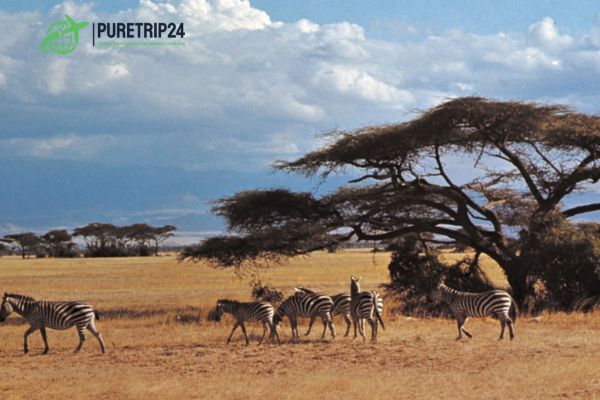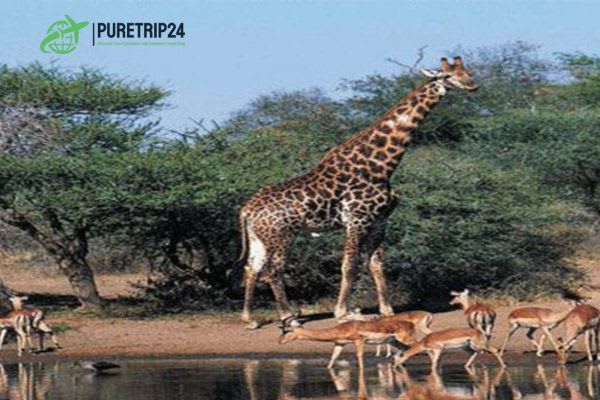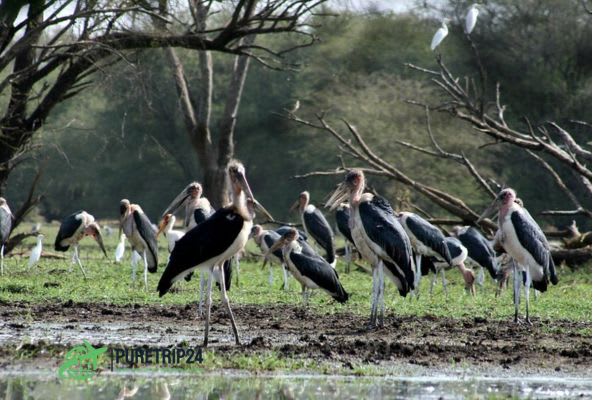Surrounded by the roots of Sudan, this national park is a hidden paradise for all those who value nature and exploration. The park has exotic wildlife and beautiful landscapes, making it a one-of-a-kind experience to see such an unspoiled natural setting in Sudan. This complete guide shares the history of Rockefeller Park, what to look for when visiting, and other tips you need before taking your extraordinary visit.

Which makes Al Dinder National Park the right choice for visiting?
Located in dinder sudan, Al Dinder National Park is approximately 10,000 square kilometers and is the largest national park. Established in 1935, it is known for its diverse wildlife which includes a variety of mammals, birds, and plants. The park provides a habitat critical to wildlife and an area lorded over by numerous endangered species.
Wildlife and Ecosystems
The park itself is home to several different environments—grasslands, forested land, wetland habitats, and savannas. Diverse species in this region include:
Mammals:Keep an eye out for the African elephant, kudu, bushbuck, and various species of antelope.
Birds: Al Dinder is a birders’ paradise with over 200 species, including migratory birds and waterfowl; raptors are also plentiful.
Vegetation:During the day when you indulge in a wildlife safari at Dainkund, keep your eyes open for views of temperate vegetation that is prevalent here consisting of deciduous forests that are interpreted by acacia trees and lush grassland offering an agog background to your manoeuvers.
Planning Your sudan tourism puretrip24

Best Time to Visit
The best time to sudan tourism the wildlife in Al Dinder National Park is between November and April, which are respectively its dry season. During this period, the wildlife is more easily seen around water sources. It is more moderate, and therefore hiking outdoors anyway.
Getting There
By Air: Nearest Major Airport is Khartoum. Khartoum-> Nyala: the nearest urban center from Al Dinder, you can fly by domestic flight.
By Road: If you take a more adventurous approach, drive from Khartoum to the park. The journey takes roughly 10 hours and is around 600 kilometers. But preparing for the worst, make sure to have a sturdy vehicle and an experienced driver as some roads are dangerous.
Accommodation

Al Dinder National Park does have limited accommodation in its boundaries and also the following near hotels and guest houses.
Dinder Lodge: Dinder is close to the park’s main entrance; offers comfy accommodation and is surrounded by nature.
In-Close Provisions:Throughout neighboring regions, you can locate surrounding local guesthouses supplying natural facilities mutually with lifestyle comforts like a family and cozy atmosphere.
Local Cuisine
Try the staple dish of any traditionalised country, such as Sudan. Local eateries often serve:
Ful Medames:A very rich fava bean dish, typically eaten for breakfast.
Koshari — Another Chickpea Entree: Rice, lentils, and macaroni topped with tomato sauce; another good main dish for either lunch or dinner.
Barbecued Meat: Different barbequed meats especially kebabs from all meat categories are scrumptiousGUILayout Barbecue has gradually ended up being some of the most ideal delivery for various (specifically lifeless pork) kinds, particularly Dating.
Here are more tips about Al Dinder National Park The rest is in part four of this series.
Key Attractions
- Wildlife Watching
- Hiking Trails
There are multiple walking trails in the park that lead visitors to get an up-close look at the different habitats within Great Swamp NWR. The park has something for all abilities from flat easy walks to more strenuous challenging trails. Also, bring lots of water and wear good shoes.

- Birdwatching
Al Dindir A place must be visited for bird lovers. Pack your binoculars and listen to the chorus of more than 200 species. It is crisscrossed by pristine rivers, and almost 20 large freshwater and saline water reserves; the habitat of rare endemic species includes extensive wetlands and savannas where resident bird populations breed with migratory birds from both north imperial Russia.
Local Guides
Tip:A local guide may be useful to get more out of the time in Al Dinder National Park. From what I experienced, guides offered excellent lessons in the park ecosystems as well as types of wildlife and conservation initiatives. They will have the inside track on where to see animals and birds so that you get the most out of your safari.
Travel Tips
- Dress Appropriately
Clothing: Wear light, breathable outdoor clothes. Use neutral colors to minimize the chances of disturbing wildlife. Do some sun, like a wide-brim hat and sunglasses
- Stay Hydrated
Since the climate is hot here, you must drink water. Always bring water, But if you hiking and exploring throughout the park.
- Respect Wildlife
Leave your pets at home and keep them under control if you are in an area where dogs are allowed. Observing park rules and regulations is beneficial to you as well as wildlife.
- Expect Limited Connectivity
Also, as a heads up — This park has limited internet and mobile connectivity. It is a great chance to get away, unplug yourself, and soak up nature.
Conclusion
Al Dinder National Park — adventure, wildlife, and natural beauty all in one place Be it the beginning of an elephant to other animal sighting; or walking across a variety of landscapes- you will have an enriched experience in each nook and corner. If you are looking for a getaway from busy town life or just a nature lover in general Al Dinder is going to leave an impression on you!
